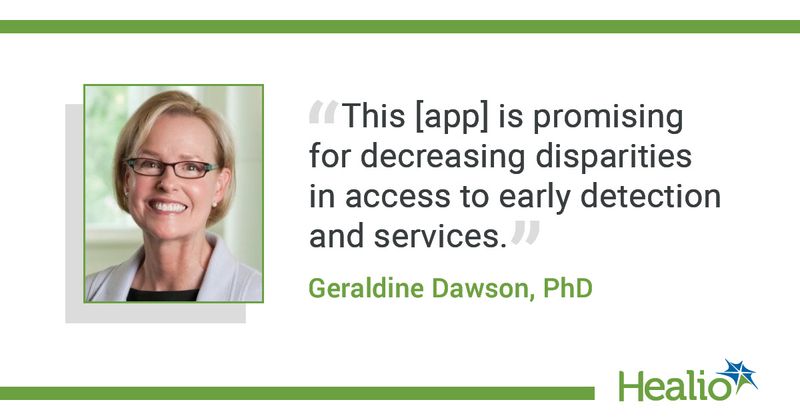App may reduce disparities in early autism detection
Key takeaways:
- SenseToKnow correctly identified 87.8% of children with autism.
- Researchers hope the app will decrease disparities in diagnosis.
An app that correctly identified most cases of autism in children could help reduce disparities in early detection of the condition, according to the results of an NIH-funded study published in Nature Medicine.
Although the AAP recommends that every toddler be screened for autism at age 18 and 24 months, there are concerns that current screening methods used in primary care that rely solely on parental reporting and questionnaires are missing children, particularly girls and children of color, according to one of the authors of the new study.

“We need screening tools based on direct observation of the child’s behavior that are objective and scalable,” Geraldine Dawson, PhD, director of the Duke Center for Autism and Brain Development, told Healio. “Early detection is important because providing early intervention has a significant impact on children’s outcomes.”
The app, SenseToKnow, can be downloaded on a phone or tablet. It shows a series of brief, engaging videos and records the child’s responses using the device’s camera.
“These videos are then automatically coded for a wide range of early autism signs using computer vision analysis,” Dawson said. “Signs include the child’s gaze patterns, facial expressions, head movements ... and at the end, there is a short bubble popping game to assess motor skills, because early motor delays are one of the early signs of autism.”
The features are then integrated using machine learning to create an artificial intelligence-based algorithm that can screen for autism. The app provides an automatic assessment of the quality of the app administration, a confidence score associated with the prediction of autism and a read-out of the child’s clinical profile.
Dawson and colleagues tested the app during well-child visits with 475 toddlers aged 17 months to 3 years. Of the cohort, 49 children were later diagnosed with autism and 98 were diagnosed with nonautism developmental delays.
Those who screened positive for autism using the app had a 40.6% probability of subsequently being diagnosed with the condition, compared with around 15% of children who screen positive using the standard parental questionnaire.
The researchers calculated the specificity of the test to be 80.8%, and that using a combination of the app and the questionnaire increased probability of a positive screen resulting in later diagnosis to 63.4%.
The test’s ability to detect autism did not differ based on the child’s sex, ethnicity or race, suggesting that it could reduce disparities in early detection and referral for services, the researchers said.
“I was pleased to see that the app showed the same results for boys and girls and for children of color,” Dawson said. “This is promising for decreasing disparities in access to early detection and services.”
Dawson said the team is currently validating the use of the app for monitoring a child’s behavior over time, “which could be useful in determining whether a therapy is working well.”
“In the future, we hope that primary care providers will be able to have more than parent report to help them decide whether to refer a child for a diagnostic evaluation,” Dawson said. “By providing both parent report and an objective tool based on observing the child’s behavior, they can be more confident in their decision making.”
References:
Digital autism screening tool shows promise in NIH-funded study. https://www.nih.gov/news-events/news-releases/digital-autism-screening-tool-shows-promise-nih-funded-study. Published Oct. 2, 2023. Accessed Oct. 3, 2023.
Perochon S, et al. Nat Med. 2023;doi:10.1038/s41591-023-02574-3.
